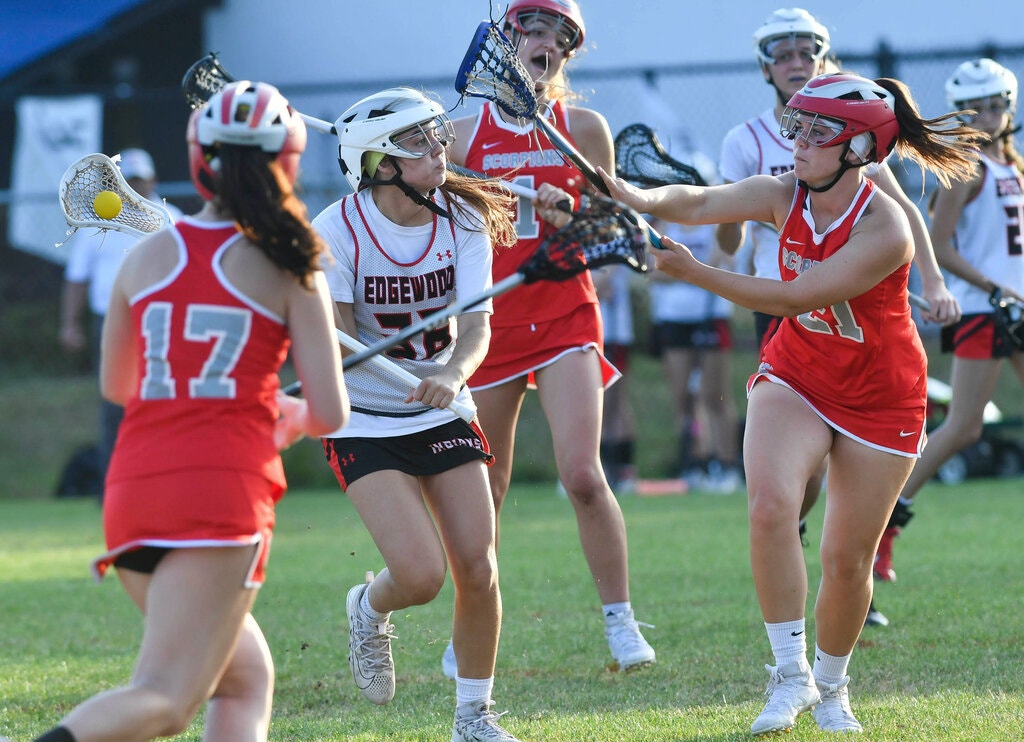Blog
Headgear Reduces Concussions in High School Girls’ Lacrosse, Study Shows
A University of Florida study includes data from roughly 350,000 games and practices in more than 30 states. Headgear for girls has been mandated in Florida since 2015, and remains hotly debated.

In 2015, without empirical evidence or data that supported the decision, Florida became the only state to require high school girls’ lacrosse teams to wear protective headgear. Boys’ lacrosse teams nationwide have worn hard-shell helmets for decades but girls, who play by rules that generally forbid contact, have mostly spurned headgear.
The Florida rule created an ongoing and divisive debate fueled by fears that the girls’ game would become as rugged as hard-hitting boys’ lacrosse. No other state has mimicked Florida’s mandate in the last six years, and headgear has largely remained optional in girls’ lacrosse.
But on Friday, in a landmark study that is likely to have widespread repercussions for the sport, researchers at the University of Florida who examined data from the last three girls’ lacrosse seasons concluded that Florida’s female high school players were significantly less likely to sustain concussions than their counterparts in states without a headgear requirement.
The study, unique in its scope because it includes data from roughly 350,000 games and practices in more than 30 states, reported that girls playing in states without headgear mandates had a 59 percent higher concussion rate than players in Florida. Moreover, games were more dangerous than practices. Concussions rates were 74 percent higher during competitions among players in states without compulsory headgear use when compared with games played in Florida.
Dr. Daniel C. Herman, the study’s lead researcher, called the finding, which will be presented Friday at the American Academy of Pediatrics national conference, “nothing but good news.”
“Because we now know that helmets seem to be effective at reducing concussions in high school girls’ lacrosse,” Herman added. “We wanted to remove the emotion from the debate and focus on the data. Now there is something to inform policymaking decisions that affect athlete safety.”
Todd Nelson, the assistant director of the New York State Public High School Athletic Association, said his group had been awaiting the results of the study, which he termed “significant.” Nelson said he hoped that USA Lacrosse, the sport’s national governing body, and the National Federation of State High School Associations would review the study’s conclusions and “possibly make some rule changes.”
“If they do not,” Nelson, whose association represents a lacrosse hotbed, said, “then our state association will look at that and possibly take some action.”
Ann Carpenetti, a USA Lacrosse vice president, called the study “compelling and very notable” and said she expected it to spawn considerable discourse nationwide. USA Lacrosse, which co-funded the study along with the National Operating Committee for Standards on Athletic Equipment, has not issued a headgear recommendation.
“It’s so new, we haven’t been able to even share the results with stakeholders and medical advisers,” said Carpenetti, whose organization spearheaded the establishment of standards for girls-specific lacrosse headgear several years ago. “Right now, we’re helping showcase evidence from a study that highlights the risk mitigation benefits of wearing headgear for girls high school lacrosse players.”
Carpenetti, however, added that she expected the topic will remain controversial within the sport’s circles and cautioned, as did Herman, that the new research did not address headgear use for girls younger than high schoolers, or for college players.
USA Lacrosse has scheduled a sport medicine symposium for Wednesday and Thursday, when the lead researchers of the Florida study will present their findings. It is also worth noting that no athletic headgear has proved to prevent all concussions. But in the case of lacrosse, headgear has been effective in reducing head trauma caused by stick-to-head or ball-to-head contact.
In roughly the past five years, as concerns about head injuries in youth sports have escalated, hundreds of U.S. school districts have made headgear compulsory at girls’ lacrosse games and practices. Two manufacturers, Cascade, the leading maker of boys’ lacrosse helmets, and Hummingbird Sports in New Jersey, have met the growing demand for lacrosse headgear designed for women.
But the pushback against headgear is staunch and well-connected since it includes many of the highest-level college coaches, who worry that the equipment will ruin the non-contact spirit of the girls’ game. Many fear that headgear use will subsequently lead to shoulder and elbow pads and heavily padded gloves, which are staples of the rough-and-tumble boys’ game. The more gear on the players, their theory goes, the more physical the sport becomes.
Lynn Millinoff, who recently retired after 14 years as the girls’ lacrosse coach at Buchholz High School in Gainesville, Fla., views Florida’s headgear era with a mix of emotions. She said the initial guidance from state officials was chaotic and confounding. She believes the players felt more emboldened and the game consequently grew rougher with more serious injuries from the neck down. She said the headgear was still unpopular among players and worried about the effect on participation levels since each piece of headgear costs about $150.
“But I’m torn,” Millinoff said Thursday. “I’ve seen some of the kids on my teams with concussions and it’s hard to watch that because they’re walking around in a cloud. It’s tough for everybody.”


